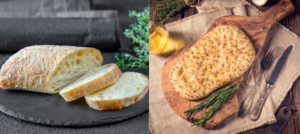Can You Eat Chicken Curry Cold? Here’s What You Need To Know!
What To Know
- Heat the curry in a microwave-safe container for 30-60 seconds at a time, stirring in between, until warmed through.
- The question of whether or not you can eat chicken curry cold is ultimately a matter of personal preference and culinary adventure.
- Whether you prefer the warmth and comfort of a freshly cooked dish or the chilled and refreshing taste of cold curry, there is a culinary path for every palate.
The tantalizing aroma of chicken curry, a culinary masterpiece, has captivated taste buds worldwide. However, a lingering question remains: can you truly indulge in this delectable dish after it has chilled? Join us as we delve into the depths of this culinary conundrum, exploring the safety, flavor, and texture implications of consuming cold chicken curry.
Safety Concerns: Navigating the Risk Factors
Before delving into the gustatory experience, it’s crucial to address the safety aspects of eating cold chicken curry. The primary concern lies in bacterial growth. When chicken curry is cooked, it provides an ideal breeding ground for bacteria. As the dish cools, these bacteria can multiply rapidly, potentially posing health risks.
To ensure safe consumption, it’s essential to follow proper storage guidelines. Refrigerate chicken curry within two hours of preparation and consume it within three to four days. Additionally, reheating the curry to an internal temperature of 165°F (74°C) before eating will effectively eliminate any potential bacteria.
Taste and Flavor: Exploring the Sensory Impact
The taste and flavor of chicken curry undergo subtle transformations as it cools. The initial heat and spice may diminish slightly, allowing the more subtle flavors of the spices and ingredients to emerge. Some may find this cooling effect enhances the complexity and depth of the dish.
However, it’s important to note that not all flavors translate well to cold temperatures. Certain herbs and spices, such as cilantro and basil, may lose their vibrancy and become less noticeable.
Texture and Mouthfeel: A Matter of Preference
The texture of chicken curry also undergoes a noticeable change when chilled. The once-tender chicken may firm up, while the sauce may thicken. This can alter the overall mouthfeel and eating experience.
Some individuals may prefer the firmer texture, as it provides a more substantial bite. Others may find it less appealing, as it can be more difficult to chew. Ultimately, the preferred texture is a matter of personal preference.
Reheating Methods: Restoring Warmth and Flavor
If you find yourself with cold chicken curry and prefer to experience its warmth and flavor, several reheating options are available.
- Microwave: Heat the curry in a microwave-safe container for 30-60 seconds at a time, stirring in between, until warmed through.
- Stovetop: Transfer the curry to a saucepan and heat over medium heat, stirring occasionally, until warmed through.
- Oven: Preheat the oven to 350°F (175°C) and place the curry in an oven-safe dish. Cover and bake for 20-30 minutes, or until warmed through.
Accompanying Delights: Enhancing the Cold Experience
While cold chicken curry can be enjoyed on its own, it pairs wonderfully with a variety of accompaniments that enhance the flavor and texture.
- Rice: A classic pairing, rice provides a starchy base that complements the curry’s rich flavors.
- Naan Bread: Warm, fluffy naan bread is perfect for scooping up every last bit of curry.
- Yogurt: A dollop of yogurt adds a cooling and tangy contrast to the curry.
- Chutney: A sweet or spicy chutney can add an extra layer of flavor and complexity.
Final Note: Embracing the Culinary Choices
The question of whether or not you can eat chicken curry cold is ultimately a matter of personal preference and culinary adventure. While safety concerns should always be prioritized, exploring the flavors and textures of cold chicken curry can offer a unique and enjoyable culinary experience. Whether you prefer the warmth and comfort of a freshly cooked dish or the chilled and refreshing taste of cold curry, there is a culinary path for every palate.
Information You Need to Know
Q: Is it safe to eat chicken curry cold if it has been refrigerated properly?
A: Yes, as long as the chicken curry has been refrigerated within two hours of preparation and consumed within three to four days, it is generally safe to eat cold.
Q: Does the taste of chicken curry change when it is cold?
A: Yes, the taste of chicken curry may undergo subtle changes when chilled, with the heat and spice diminishing slightly and the more subtle flavors becoming more noticeable.
Q: Can I reheat cold chicken curry?
A: Yes, cold chicken curry can be reheated using a microwave, stovetop, or oven. Reheating to an internal temperature of 165°F (74°C) is essential to ensure safety.
Q: What are some good accompaniments for cold chicken curry?
A: Rice, naan bread, yogurt, and chutney are all excellent accompaniments that enhance the flavor and texture of cold chicken curry.
Q: Can I freeze chicken curry?
A: Yes, chicken curry can be frozen for up to three months. Allow it to cool completely before freezing and thaw it thoroughly before reheating and consuming.
